Hexany Audio Team Interview Discusses Splitgate: Arena Warfare & Men in Black: Galactic Getaway - WorthPlaying.com
Hexany Audio Team Interview Discusses Splitgate: Arena Warfare & Men in Black: Galactic Getaway - WorthPlaying.com |
- Hexany Audio Team Interview Discusses Splitgate: Arena Warfare & Men in Black: Galactic Getaway - WorthPlaying.com
- Creating a Song with the Output Virtual Instrument and Effects Suite - Reverb News
- Best backwards-compatible games on Xbox One - TechRadar
- Chillwave At 10: The Essential Tracks - Stereogum
| Posted: 24 Jun 2019 12:09 AM PDT Currently available on PC (Steam), Splitgate: Arena Warfare evokes your favorite memories of the most-revered shooters of the past two decades, embracing the classic and familiar feel of arena multiplayer with a multi-directional twist. Splitgate: Arena Warfare's world-bending portal mechanic lets players instantly create and link gateways around the map, encouraging and rewarding constant jetpack-boosted movement, strategic flanking and ambushes, and action that truly embraces all 360 degrees. It also looks really cool. Splitgate: Arena Warfare is designed to be equally accessible to first-time and veteran FPS players, with an infinitely high skill cap that will take players hundreds of hours to refine and master. Men in Black: Galactic Getaway is a zany, action-packed interactive experience that is now available to play nationwide for Dave & Buster's multiplayer virtual reality simulator, pressing players into service as "accidental" MIB agents on a madcap dash to stop a notorious alien gang from making it to their getaway spaceship and escaping. The Men in Black universe comes to life as players chase down and apprehend a wacky crew of alien criminals who have stolen deadly jars of glowing green goo and insect parts (of the planet-destroying kind!) before they escape from Earth. But don't fret: there are two wise-cracking alien guides to help players out every step of the way as they make their way through New York and London, wreaking havoc and causing lots of destruction, and finally to a showdown of epic proportions! Can you imagine playing a video game with just the score and no sound effects? Or the other way around? For a multiplayer shooter game, such 1047 Games' Splitgate: Arena Warfare, you wouldn't even know if a gun had fired without the effects. Or in a virtual reality game, such as VRstudios new Men in Black: Galactic Getaway, you wouldn't realize an evil alien is about to attack you without the ominous score. These are just two recent games that the team at Hexany Audio, a Los Angeles based game audio studio, has brought to life through the audio. Some of their other recent credits include Tencent's Arena of Valor, Chance6 Studios COLINA: Legacy and VRstudios' Star Trek: Dark Remnant to name a few. To better understand the process for creating this crucial gaming element, Hexany's audio director Richard Ludlow, sound designer Kellen Fenton and composer Matthew Carl Earl all go more in depth below, specifically discussing their work on Splitgate: Arena Warfare and Men in Black: Galactic Getaway.
More articles about Splitgate: Arena Warfare |
| Creating a Song with the Output Virtual Instrument and Effects Suite - Reverb News Posted: 20 Jun 2019 10:52 AM PDT  I've not yet entered the better half of my 20s and yet I'm absolutely tired of being sold to. When it comes to audio plugins in particular, I begin to get a little nauseous when I read the little quips and taglines like: "the lush, warm, and inimitable tape saturation from the golden era of recording," "the optical compression circuit that flipped music on its head," and so on and so forth. Particularly when you order a virtual instrument that claims to do both the new and old very well, in my experience, you should get ready to be disappointed, because you'll usually receive a sad hybrid that does neither the new nor the old all that well. But Output's suite of instruments and effects plugins offer something new, something old, and everything in between. I was able to get my hands on eight of them (unfortunately, just before the new Portal FX granular synthesis plugin was released). And it seemed to me that you could produce a whole track solely through the Output suite—so let's try it. The first thing you hear in this track is a swell I put together in Exhale, Output's modern vocal engine. What I like most about Exhale is that, though all the samples are familiar and vocal-based, the built-in effects and different chopping parameters within are capable of creating something that, at least to these ears, sounds absolutely fresh. I feel as though Output's instruments are largely unpredictable in their creations. After sitting with their instruments for some time, I get the sense that you can create most any sound across any of these libraries. If I was in a session and saw somebody pull up Substance, the powerful bass engine, I would have no clue if they were going for a deep bass groove, a soaring lead, or something in-between. The results are nearly endless. To put that notion to the test, I asked myself, What would be the starkest juxtaposition to an EDM-inspired reverse vocal sound? A George Martin-esque string quartet. That is the next thing you hear in the composition. For this section I split two Analog Strings patches—a driving bass staccato sound and a slightly gentler ensemble patch—to create an energized string section. I was absolutely blown away by how well Analog Strings reinvents the classics with modern gusto. By the time the progression comes around again, we are introduced to my favorite of the Output suite: Substance. Being a well-rounded producer in 2019 means bass, and a lot of it. I used to jump from bass sound to bass sound, never fully satisfied. From Omnisphere to Punchbox, from Live's built-in synths to UVI and beyond, most bass engines, to me, sound thin. This could be that I just can't program sounds for the life of me, or I just never clicked with any of these plugins—either is totally viable. However, from the first note of the first preset in Substance, I was well aware that my search for that bass was over. The Substance patch that sinisterly sits beneath the string section at the 0:22 mark is something I put together, heavily inspired by the sounds and synthesis of Mike Dean—the Kanye West, Travis Scott, G.O.O.D. music producer, who, funnily enough, is the reason I initially wanted Output's Exhale library. Here, I paired a live bass patch with a dark and distorted, sub-y Moog type. I love this patch because not only would it stand out on its own as the main bass in a breakdown, but it somehow also sits beautifully behind a lush string section, filling the low-end while simultaneously complimenting the parts around and above it. As the strings drop out, I introduce Output's Rev-X Loops via a mandolin and guitar patch with bit reduction and rotary sprinkled on top. The best way I could describe Rev-X Loops is that it's like a Mellotron... but not. It does not have any of the Mellotron sounds per se, but it does couple familiar instruments and progressions with some truly interesting coloring. Though I was initially uninspired by Rev-X Loops, I found it really excelled as a shading tool, filling in all the empty space without overwhelming the listener. Seeing as the patch was sounding more and more like an old-school sampler, I decided to bounce out a couple bars of the loop and, within Live, pitch the loop to key to replicate that of a vintage E-Mu box or MPC. It is characterful and fills out the highs without distracting from the Substance patch. I needed to introduce an element as the drums dropped out, so I opted for a super haunting, organic hum sent through Exhale's built-in rotary speaker. One of my few qualms of Exhale—which could also be said about other parts the Output suite—is how incredibly noisy this patch became. I tried tweaking the gain, the rotary parameters, etc. but nothing seemed to do the trick. At the end of the day, I just moved on. Surprisingly enough, that noise inspired the transition into the section that hits around 1:20. Disguised beneath it is the first instance of Output's Rev—in particular, the Riser bank. I love swells and, in short, the best thing that I can say about Rev is that it eliminated the need to ever dig into my sample libraries again and put a cymbal crash in reverse. Between the more than 40 rise banks and the individual tweaking capabilities, you can seemingly create enough anticipation for just about anything. In this instance, Rev builds to these dense brass stabs courtesy of Signal, the pulse engine. Signal gives enough interesting movement and bounce that if I needed an instrument to inspire me, this would be one of the first places I'd look. Enlivened with just a little bit of in-house delay and stereo imaging, what you hear here is simple held chords. The bulk of the work is being done by Signal's A and B pulse engines to deliver the energy needed to carry this section. Supplementing this section beneath the Signal stabs, is another Signal patch called Caffeine, a driving percussive element. By triggering one note here, I was able to get an analog-y tom drum sound and, by triggering another note on the two and four, I was able to introduce an energizing snare hit. Filling out the rest of this space is yet another rotary-fueled Exhale patch and (one of my favorites) a pair of Roland-inspired brass sounds that, surprisingly, came from Substance. Again, with all this momentum, I use Rev to build, and then fall, into an Analog Strings section. Behind the strings is where we get our first taste of Output's only effect plugin, Movement, designed to animate your sound. I placed three different instances of Movement over three different drum loops that I pulled from Splice, and I was quickly impressed. The drum loops were present but not overbearing and, most importantly, they were much more interesting coming out than they were going in. It's also worth noting that, for these drum loops, I just threw on some presets—I don't think I've ever worked so little with an effect plugin to get the desired result, albeit my vague desired result being "make this sound better." In short, it kept the track moving without stealing the show. We signal the final section of this piece with a massive bass stab (reminiscent of the intro to The Weeknd's "The Hills") courtesy of Substance. Floating behind it is a couple instances of Rev's reverse instruments and, as the drums drop, we activate a couple more instances of Movement on top of them to dance around the hi-hat pattern. As everything fades out, we are introduced the final element —an Analog Brass and Winds patch that, if I can be a bit tongue-in-cheek, truly transports you to another, very cinematic, world. It's very full, it's very commanding, but it's incredibly musical, which, coincidentally, is how I feel we can summarize all that's come out of Output HQ. I must add, though, that no plugin is perfect. I'm easy to please when it comes to built-in effects. I mean, they are built-in, and I never expect much from them. However, when I'm spoiled by the sonic quality of each Output instrument, I grew to expect a bit more control within the effects sections. Not only are a few controls limited but, in some instances, the controls that Output does provide are somewhat difficult to read and adjust. Once in a while, I had no clue how I was adjusting across each of the parameters. Secondly (and understandably as they are large libraries), some of these instruments took a while to load. If I was in a session where things were really moving, particularly if I was producing for another artist, I could see myself avoiding the likes of Analog Strings and Analog Brass and Winds so as to not wait two to three minutes while the instrument readied itself. Other than that, I had no qualms with the Output catalog. If you read my "3 Music Software Programs That Can Spark Your Creativity," you'll know that I like simplicity. Output, with its few flaws, packs as much complexity as I could ever ask for in simple, beautiful, and comprehensive workflows. |
| Best backwards-compatible games on Xbox One - TechRadar Posted: 25 Jun 2019 07:13 AM PDT Around the same time that Microsoft revealed the first details about its next console, Project Scarlett, the company also announced the final bunch of games coming to the Xbox One backwards-compatibility library. It marks the end of one of the best initiatives of this console generation, with over 600 games from the original Xbox and Xbox 360 becoming playable on Xbox One. Many of these games even received extra technical updates on Xbox One X, such as improved resolutions, anti-aliasing, frame rates and load times. It's a feature we're told to expect again with the next Xbox console, and being able to play games from previous generations will no doubt be a big sticking point for the great Xbox Scarlett vs PS5 battle coming next year. For now, though, with the Xbox One's library of backwards-compatible titles now complete, we've decided to round up the 10 best Xbox and Xbox 360 games lining its shelves today. 1. Splinter Cell: Chaos Theory
Image Credit: Ubisoft (Image credit: Ubisoft) Of the final 23 games added to the backward-compatibility library, the most tantalising additions were from Tom Clancy's seminal sneak-em-up, Splinter Cell. To this day, few games utilise the spectrums of light, sound and sight quite like these, and while later series entries like Double Agent and Blacklist (also backward-compatible) may have more technical prowess, Chaos Theory remains nigh-on perfect. Hero Sam Fisher is as acerbic as ever, with a small but precise toolset that includes listening devices, a OCP that disables electronic devices, and a combat knife that lets you threaten enemies you interrogate. Missions like Bank and Hokkaido are pinnacles of stealth level design, and both the co-op and Spy vs Mercenary multiplayer hold up well today. 2. Fable II
Image Credit: Lionhead Studios (Image credit: Lionhead Studios) Arguably Peter Molyneux's last great game, Fable II felt like it could've been the direction that future RPGs would take when it came out in 2008. It let you do just about everything, such can getting married, buying a house, starting a family and taking on menial employment alongside the usual business of becoming a high-fantasy hero. The combat hasn't aged that well, but the writing, dialogue choices, and whimsical world are a nice break from today's trend towards darker fantasy stylings. Fable II received the Xbox One X Enhanced treatment, so its flumpy art style really pops if you have the hardware. It squeezes in a half-decent co-op mode too. 3. Red Dead Redemption
Image Credit: Rockstar (Image credit: Rockstar) Some would say that the original Red Dead Redemption continues to be the best open-world western ever made. It's certainly a much smaller game than its epic successor, but that also makes it pacier. It's a straight-shootin' romp following John Marston, one of the last living members of the outlaw posse from Red Dead Redemption 2, as he's forced to hunt down his former accomplices. It's perfect to go back to after you complete the prequel. It's a sobering tale, but the crass, comical characters Rockstar is renowned for still imbue it with plenty of humour. The arid, dust-swirling climes of the game world look so good on Xbox One X that you can practically feel the sand gristling between your teeth. 4. The Orange Box
Half-Life 2 (Image Credit: Valve) (Image credit: Valve) Arguably the best-value videogame bundle you can buy on disc, The Orange Box contains Half-life 2, both its expansions, Portal, and Team Fortress 2. The only downside going back to it today is that Team Fortress 2 – as with most online Xbox 360 games – is pretty much barren (just play it on PC – it's free). Beyond that, Half-life 2 remains one of the best narrative-led first-person shooters ever made. It takes eternally mute hero Gordon Freeman through a near-future, Soviet-style dystopia of City 17 - the heart of a nefarious multi-dimensional empire known as the Combine. It revolutionised in-game physics (ahh, sweet Gravity Gun in Ravenholm), which Valve later took in an ingenious new direction with first-person puzzler Portal. 5. The Witcher 2: Assassin of Kings
Image Credit: CD Projekt RED (Image credit: CD Projekt RED) The Witcher 3 is a defining game of this generation, and one of the best RPGs ever made. Its predecessor is more linear and smaller in scale, but tells an incredibly tight story as Geralt seeks to clear his name and track down the assassin of the Emperor. It's not open-world, but The Witcher 2 is filled with big, distinct locales with a great sense of place – from the humble village of Flotsam to the stunning city of Loc Muinne. It presents you with meaningful choices that branch the story and affect the ending, and is in some ways more focused than its formidably sprawling sequel. Essential for those looking to dive deeper into the compelling dark-folky world of Andrzej Sapkowski's imagining – or those with time to kill before the launch of CD Projekt Red's next game, Cyberpunk 2077. 6. The Mass Effect Trilogy
Image Credit: Bioware (Image credit: Bioware) There's no trio of video-games quite as inseparable as the Mass Effect trilogy. Across all three games, your decisions affect how subsequent ones pan out, and even if you still haven't forgiven that infamous ending to this glorious space opera, the interstellar journey remains a memorable one. As Commander Shepherd, you assemble a motley crew of space soldiers aboard the SSV Normandy, travelling between cosmic outposts and constellations as you take on the galaxy-devouring Reapers. Inevitably, things get pretty steamy when you're sharing dorms and condensed blocks of space food every day in tight confines, and the trilogy is infamous for the myriad relationship and romantic interests Shepherd can pursue with his/her crewmates. 7. Gears of War 2
Image Credit: Epic Games (Image credit: Epic Games) The ultimate symbol of its era, Gears of War 2 may be a gritty shooter with the colour palette of a dilapidated coal factory, but it's among the best of its kind. The single-player campaign is a butch but self-aware blast through the ruins of fallen human civilisation as you take on the Locust threat. Expect plenty of grizzly jarhead dialogue and quips as Marcus Fenix, 'Cole Train' and the rest of the Band of Bulbous-Bicepped Brothers make a return. The gameplay loop is a blistering mix of stop-and-pop shooting, Active Reload, and the kind of dodge-rolls that really shouldn't be possible for men wearing such inordinately girthy armour. It looks glorious with 4K enhanced textures, and its campaign can be played cooperatively online or in split screen – though you'll be lucky to find an online competitive match these days. 8. Grand Theft Auto: San Andreas
Image Credit: Rockstar (Image credit: Rockstar) Yes, there's only so much you can do to those twiggy character models whose visible joints give them the appearance of cheap action figures, but San Andreas is worth going back to for other reasons. There are three cities and a whole bunch of backwater to explore, and its ghetto-tale, inspired by classic movies like Boyz N The Hood and Menace 2 Society, is still possibly the best GTA story to date. Don't forget that secret local co-op mode too. It captures that early 90s feel perfectly, letting you evolve your avatar's appearance RPG-style, then head out on turf wars in your bouncing lowrider to the sound of Public Enemy. Enhanced on Xbox One X, everything from the smoggy Los Santos sunset to those perfectly anti-aliased powerlines looming over the hood feels reinvigorated.
Image Credit: Bethesda (Image credit: Bethesda) It's hard not to be endeared to Oblivion's mix of a sweeping high-fantasy world and the innate jankiness that runs through its physics, voice-acting and writing. It's a huge game – especially with the kooky Shivering Isles expansion – and features some of the best quests in the entire series; we doff our hats to the Dark Brotherhood questline in particular, and the unexpected voyage where you wake up on a ship tavern to find it hijacked by pirates. It's also filled with strange AI-driven scenarios that never get old. Whether it's the disjointed dynamic conversations you overhear between NPCs in town squares, or the way a minor fistfight can escalate so far that the City Watch fight each other to the death, Oblivion is a truly timeless oddity.
Image Credit: Bethesda (Image credit: Bethesda) Outside of the PC crowd, Morrowind isn't as widely remembered as later Elder Scrolls games, but its otherworldly setting and heavier reliance on written dialogue gives it an elegance lacking in its successors. Together with the Bloodmoon and Tribunal expansions, it's still an RPG of incredible scale. The Xbox One X Enhanced version boosts the frame rate to a steady 60fps and does a great job of smoothing out blurry textures and rough edges. You don't get widescreen, and the pop-in from the all-enveloping fog is a bit jarring, but its unique atmosphere makes it more than worthy of playing on a large screen with a gamepad. With Elder Scrolls 6 coming who-knows-when, there's plenty of time to go back and enjoy the old classics in the iconic fantasy series. |
| Chillwave At 10: The Essential Tracks - Stereogum Posted: 25 Jun 2019 08:37 AM PDT  I honestly thought "glo-fi" was gonna stick, y'all. This was the first name I recall being given to a weed-scented wave of music that emerged out of nowhere before it was seemingly everywhere during the Deadbeat Summer of 2009. Washed Out, Ducktails, Memory Cassette, and Neon Indian — seemingly every one of them had names that could pass for iPhone camera filters and it was truth in advertising. They all worked in a new yet very dated-sounding style of electronic music bearing the audio quality of a thrice-overdubbed Guided By Voices cassette, yet oddly luminous and glittery rather than ugly or abrasive. It often sounded like it was recorded in a lit water bong, and nearly everyone who encountered "glo-fi" called on the specs of moldy VHS recordings as a comparative point (after all, glo-fi artists frequently used them as source material): hyper-saturated color, the wobbly, disorienting effect of screwing with the vertical hold, and most importantly, being of an age when VHS tapes were a primary form of A/V delivery. If all those descriptions seem cliché now, it's only because no one ever improved on it. And yet, because "glo-fi" so flawlessly encapsulated the sound and feel of the music therein, it never seemed destined to be anything beyond the name of a microgenre that would come and go as swiftly and politely through the public consciousness as shitgaze, witch house, you name it. But once "chillwave" was coined to replace "glo-fi," well, that was a name befitting a phenomenon, positioning the music not as the sole focus, but at the center of a cluster of indie culture trends bubbling up toward the end of the decade — Hipstamatic and the revival of Polaroid, a proliferation of vinyl and cassette labels, Urban Outfitters' incessant need for store-mix fodder, tastemaking music blogs, Tumblr, a curious wave of guitar bands reveling in beach iconography and surf music, and above all, the so-ironic-it-might-actually-be-sincere pose of Carles, the Hipster Runoff founder often credited with inventing the term. As the journalistic cliché goes, three is a trend, and chillwave did it one better by boasting at least four leading figures in 2009. (1) Ernest Greene, a University Of Georgia grad in his mid-20s who moved back home with his parents after failing to find work as librarian and made bedroom recordings as Washed Out. (2) Chaz Bundick, one of Greene's earliest collaborators: a half-Filipino, half-black graphic-design major at the University Of South Carolina who played in a few indie-rock bands in high school before starting Toro Y Moi. (3) Neon Indian's Alan Palomo, who was born into a musical family (his father was a Mexican pop star in the late '70s whose work was occasionally sampled in Neon Indian songs) and he later attended the University Of North Texas in Denton, a giant public institution and also one of the most renowned places to study music in the country. (4) Dayve Hawk, a Philadelphian who made quintessential chillwave documents under a host of confusingly similar names (Memory Tapes, Memory Cassette, Weird Tapes) after his Polyvinyl-signed indie rock band Hail Social sputtered at the end of the blog-rock era. Due to their collaborations and stylistic commonalities — shifting from guitar to solo synth projects, filters upon filters upon filters and androgynous vocals drowned in reverb, "glo-fi" was easy to define and relatively narrow. It was indoor music about going to the beach, or at least the concept of the beach, the most accessible fantasy vacation most Americans can pack into a single afternoon. After taking the photo that graced the cover of Toro Y Moi's Leave Everywhere EP, a woman named Christy wrote on her blog, "Chillwave is when you're at a South Carolina beach with friends and while wading in the ocean far, far from the shore someone asks 'we need to head back soon?' And you have work in the morning, an 8 a.m. meeting maybe, but you emulate the quiet ripple of the tide and you say 'naw, we'll make it back,' and you're right. You do make it back." While chillwave was perhaps the last indie phenomenon to predate Twitter's reign as the predominant form of social media, it was the first I remember to be endlessly volleyed about through thinkpieces the way things are today — the first "in defense of chillwave" piece ran as early as March 2010, in response to a vicious New York Times review from SXSW that spanned the Big Four as well as quasi-wavey acts like jj and Tobacco. But on either side, most chillwave analyses could agree that it was an inherently political artform on some level. The scene's leading figures were conflated into a composite sketch of a boomerang kid living in the New South during the Great Recession, crushed under mounting student debt and the realization that they're part of the first generation that won't be economically better off than their parents. It's really not all that different than what frequently gets referred to as "millennial malaise" today, and if chillwave's defeatist demeanor feels irresponsibly naive or disengaged now, remember that the Obama era frequently lacked the galvanizing figures that could mobilize outrage against "the banks," "the economy," or whatever other late-capitalist boogeyman you could name. Bundick is rarely given credit as a lyricist — which makes sense, as lyrics are often assigned a secondary role (at best) in the music of Toro Y Moi. And yet neither Ezra Koenig, Matty Healy, Lorde, Billie Eilish, Blueface nor anyone else credited as The Voice Of The Millennial ever wrote a truer, more devastating critique of post-grad workingman's blues than the one from "Blessa" — "I got a job, I do it fine/ not what I want, but still I try." Both fans and critics alike knew that chillwave was intentionally meant as background music to elicit nothing stronger than a sigh of resignation, so it's sometimes hard to remember how this was all considered to be an exciting development. I've asked that question of myself as well — the sonic properties of chillwave are almost diametrically opposed to that death-or-glory emo shit I mostly write about here (in 2009, either Merriweather Post Pavilion or Post-Nothing was my #1 album, I honestly can't remember). Maybe it's not a coincidence that the summer of 2009 just so happened to be a time when I started making new friends who all seemed to have pools and liked to bike to the beach at night. But while the bigger indie-rock trends of the decade up to that point were largely revivalist, chillwave felt like a truly contemporary form of music, similar to pop, hip-hop, and electronic in that its main figures were in conversation with each other and drew from influences no more than a few years old. For example, to properly understand the Strokes and the rest of the New Rock Revolution, you needed a refresher on CBGB and the Velvet Underground. Dance-punk necessitated a relitigation of Public Image Ltd. and This Heat. Interpol and the parallel wave of "angular" British post-punk exhumed Joy Division and Gang Of Four. The untouchable first half of Hot Fuss was really just the new untouchable first half of Rio. Freak-folk gave Linda Perhacs and Vashti Bunyan a second shot at indie sainthood … and then indie-folk was just CSNY for Jettas … and then for a couple of years, it became cool to like Bruce Springsteen again … you get the drift. But anyone could become an expert on chillwave if they'd kept up with year-end lists over the past several years. It's easy to draw a line from the sun-warped samples of Boards Of Canada's Music Has The Right To Children and the oceans of noise on Fennesz's Endless Summer to chillwave's compositional tactics, but they're more spiritual guides, priming indie audiences for innovative electronic music that still intended to swaddle the listener in the soft-focus reverie of kindergarten naptime or a wasteful teenage August afternoon. The same could be said of J. Dilla's Donuts, a poignant collection of dusty soul samples that became a living will to his fans and was reportedly an enormous influence on early Toro Y Moi. Meanwhile, the genre's aquaphilia could also be heard as a logical extension of Balearic and the genre-agnostic escapism of Studio, Air France, and the Tough Alliance coming from Sweden's Sincerely Yours label. But a fundamental irony of chillwave is that it owes a tremendous debt to one of the least chill indie-rock stars of the past decade. "2009 was the year Ariel Pink became the most influential figure in indie pop," Pitchfork's Mike Powell wrote in a year-end blurb for Neon Indian's Psychic Chasms, "which is too bad because it's the first year since 2003 that he didn't reissue anything." Early Ariel Pink collections The Doldrums and Worn Copy were the first releases on Animal Collective's Paw Tracks Records that weren't their own, and were immediately identified as formative documents of chillwave — Pink absorbed decades of cheesed-out source material (hold music, commercial jingles, muzak), studied its songwriting mechanics and perverted it with unctuous reverb, lo-fi glam affectations, and druggy bad vibes. It's possible that the Animal Collective connection alone would've been enough to justify Pink getting signed to 4AD and releasing "Round And Round" anyways, but it's likewise hard to imagine Before Today being seen as a culmination of two of the previous decade's most prominent threads. And yet, those weren't even the most impactful proto-chillwave albums to be released on Paw Tracks. In 2007, Panda Bear followed up his sparse, mournful solo debut Young Prayer with Person Pitch, a sample-delic masterpiece that sent countless budding musicians to find SP-404s; his own shift from acoustic guitars and drums to tinkering paralleled and irrevocably changed the trajectory of indie rock. Paw Tracks is also under the umbrella of Carpark Records, the DC-based label that has released every Toro Y Moi album, as well as works from Memory Tapes, chillwave adjacent acts like Dog Bite and Young Magic, and the first two Beach House albums — not chillwave, per se, but a band whose opaque, gossamer music wouldn't headline festivals for anyone preceding the Vibe Generation. While chillwave was something of a progressive form, it still arose at the tail end of the blog-rock era, where anyone who experienced a blip of online hype was expected to level up the old-fashioned way, i.e., signing to a bigger label, making an album (as opposed to singles or EPs), and "proving it" on the road. Most chillwave artists were quite literally a dude making music in his bedroom on samplers and synthesizers — either they had to replicate that setup on stage or hastily assemble a band. Unsurprisingly, some of these early gigs were among the worst I've ever seen. This applies to many of the solo dream-pop or garage acts that were lumped into the "chillwave era" as well — straight-up indie-rock buzz bands with names like Wavves, Best Coast, Sun Airway, Surfer Blood, Beach Fossils, and by extension, the Drums, whose first blog hit was titled "Let's Go Surfin'." Lest we forget Real Estate's first album had two songs with the word "beach" in it and they were launched by a label called Underwater Peoples. "Chillwave" soon meant everything and also nothing specifically, having run its course by 2011 — a year which paradoxically found its biggest names proving their staying power. About 13 months after Causers Of This, Toro Y Moi quickly turned out Underneath The Pine, which retained its predecessor's humidity and laid-back charm, while expanding Bundick's (now Bear) range to florid folk, dance-pop, and paisley psychedelia. His earliest champions included Kanye West and Tyler, The Creator, which is why future 2010s lists will probably be determined by writers who grew up thinking that Toro Y Moi were one of the greatest bands of the decade. Washed Out signed to Sub Pop and worked with "it" producer Ben H. Allen, the guy behinds the boards for Deerhunter's Halcyon Digest and Animal Collective's Merriweather Post Pavilion. The resulting Within And Without deftly defied the backlash with a high thread-count make-out record situated somewhere between Moby's Play and Air's Moon Safari. Later that year, Neon Indian transcended his lo-fi roots with Era Extrana, a dazzling array of Dave Fridmann-produced electronic pop that remains of the most underappreciated records of the decade (think of it as Hurry Up, We're Dreaming's oddball cousin). In the time since, each has continued to foster a sizable audience with consistently rewarding music and Toro Y Moi and Neon Indian in particular are reliably entertaining festival acts. While Memory Tapes couldn't capitalize in a similar way, I'll grant this to Player Piano and Grace/Confusion — they have their moments. Beyond the fortunes of its biggest names, it's clear now that chillwave was the start of the 2010s rather than the end of the 2000s. Most chillwave was created as beatmaking or sampling and it sounds really good when you're high, so its eventual leaching into hip-hop was inevitable — the brief "cloud rap" surge of 2011 spanned from Lil B to Main Attrakionz to A$AP Rocky via the beats of Clams Casino (whose Instrumental Mixtape I is an arguable chillwave classic), and this was around the time rappers were starting to sample Beach House as well. Chillwave also eventually led to vaporwave, another widely mocked and vastly influential form of electronic music. And while chillwave was largely a rebuke to rock music (Bundick, Hawk, and Palomo were previously in guitar-fronted bands), some of the most successful rock acts of the 2010s have aligned these two seemingly incompatible modes — Mac DeMarco first gained notice in a band named Makeout Videotape and became an icon by conflating the look and musical taste of every sixth-year senior in every frat house in the past 20 years. Even the arena-ready likes of Tame Impala and the War On Drugs are more likely to vibe than rock, not to mention they're anti-rock stars, essentially solo artists who lock themselves in the studio for about three years just to tweak EQ and phaser pedals. Most of all, chillwave predicted the way most young people would interact with music — not for nothing is "Chill Lofi Study Beats" one of the most popular playlists on Spotify and nu-chillwavey acts you've never heard of seem to rack up millions of digital spins. At this point, the boundaries of chillwave are so distended that I've seen "best of" lists that include stuff like Bombay Bicycle Club's A Different Kind Of Fix — I mean, it was produced by Ben H. Allen, but it also sounds like a glitzier version of Snow Patrol. And most songs that people might consider chillwave are more accurately described as dance-pop or Balearic or vaporwave or straight-up indie rock. To put it in the most reductive way possible, if you can play it on solo guitar, it's not chillwave — Real Estate's "Suburban Beverage" is the outer boundary, a song whose production values and lyric(s) are otherwise extremely "chillwave," but as their future records proved, it's just an extremely chill indie-rock song from an extremely chill indie-rock band that recorded in better studios once they could afford it. This pervasive, ambient existence of chillwave makes an Ultimate Playlist nearly impossible to contain without bringing it back to the original definition, i.e., "glo-fi." Unlike most other Ultimate Playlists, this one isn't in chronological order or ranked; I can't definitively say these are the greatest chillwave songs either, as many of the genre's most iconic tracks have been swapped out for a lesser-known one from the same artist. Rather, my intention was to create a proper mix that focused on sonic coherence and sequencing and this is meant to be played in order — most of the individual artists herein worked best in the single or EP format, but hopefully this can recreate the original, cumulative sensation of hearing all of these similarly-minded artists cropping up around the same time: drowning out daily drudgery by turning its mundane rhythms and low-buzz anxieties into a cocoon of blissed-out white noise. Here's an hour's worth of vibes whenever you want to raise the Deadbeat Summer. Javelin – "Vibrationz"The story of chillwave is largely one of internet ephemera in late-stage indie capitalism, so give me a moment to salute MTV Hive and give a shout to anyone else who made a buck publishing for what Wikipedia accurately describes as MTV's "online music video portal and its editorial mouthpiece for coverage of indie music genres." One of MTV Hive's flagship programs in 2011 was Weird Vibes, a rebrand of Shirley Braha's beloved New York Noise, an hourlong program that juggled indie rock videos, man-on-the-street skits and interviews. For example, Episode 30: "Animal Collective is interviewed at a cupcake shop, with videos from Ariel Pink, Suburban Kids With Biblical Names, Devendra Banhart, Matisyahu." According to a New York Times preview of Weird Vibes, "the first episode will feature interviews with several musicians on "the hardships of being in a buzz band," while, "the second episode had been shot at the Pitchfork festival in Chicago, where she interviewed members of several blog-celebrated bands, among them Best Coast, Beach Fossils, Odd Future and Toro Y Moi." 2011, y'all! Alas, in 2013, MTV Hive downsized to become a Twitter account (@MTVArtists) that hasn't posted since 2015. Shirley went on to shepherd the career of Instagram sensation Marnie The Dog. Point being that "Vibrationz" was the theme song for Weird Vibes, so it's probably got more early-2010s hipster cred than "Feel It All Around" earned from Portlandia. Neon Indian – "Terminally Chill"Most chillwave artists bristled at being tagged with the term, but Alan Palomo's got no plausible deniability — behind "Should've Taken Acid With You" and "Deadbeat Summer," "Terminally Chill" is actually the third most 2009 zeitgeist-y song title on Psychic Chasms. Washed Out – "Hold Out"What kind of contrarian chillwave list leaves out "Feel It All Around"? I can't think of too many songs that are more definitive of a popular subgenre. And yet, who the fuck is reading a chillwave list in 2019 if they haven't heard "Feel It All Around"? So let's reserve at least some shine for "Hold Out," sandwiched right between the best-known tracks on Life Of Leisure and the closest Greene ever got to a "Blessa"-like chillwave dictum: "It's all right but sometimes you hold out for more." Toro Y Moi – "Talamak"Not to take anything away from "Blessa," whose aforementioned lyrics are nothing short of the chillwave Pledge Of Allegiance. But Causers Of This was never intended as the voice of a generation so much as a classic breakup album — boy gets dumped, retreats to a sampler full of waterlogged synths, with choice cuts like "Talamak" somewhere between For Emma, Forever Ago and One Word Extinguisher. Memory Cassette – "Surfin/Body in the Water"Lest you think I'm trying to play up Dayve Hawk as the Darko Milicic of chillwave, Seek Magic is probably the best album of the bunch that dropped in 2009 — and, by definition, probably the greatest chillwave album of all time. But while Seek Magic toyed with electro-pop as defined by New Order, Aphex Twin, Brian Eno, and Hot Chip, his Memory Cassette EP Call & Response was chillwave in its purest form. Small Black – "Despicable Dogs"Though often framed as a phenomenon emanating from the South and suburbia, chillwave ended up infiltrating New York City and creating all kinds of hazy memories of Tito's Vodka-endorsed parties and the buzz bands that played them. None were more NYC buzz band-y than Small Black, whose live set up featured Juan Pieczanski, the guy behind the Pitchfork.tv staple "Juan's Basement." Bonus points for the Washed Out remix. Brothertiger – "Vision Tunnels"Chillwavers are often stereotyped as non-musicians, guys who lack the vocal chops or instrumental proficiency to play anything else and also the conviction to be punk. But then you've got guys like John Jagos, the Brooklyn-via-Toledo artist known as Brothertiger who recently did a full-album cover of Tears For Fears' eminently grandiose and unchill Songs From The Big Chair — and he kinda pulled it off! But the title track of his 2010 debut EP leaves no doubt where his heart truly lies: his Twitter bio reads "swimming through the ether" and recently featured a post of him replicating a synth tone from Music Has The Right To Children. Baths – "Maximalist"Tough call with this one, just as it was in 2010. I remember a lot of litigation over whether this would be considered chillwave in the slightest if dude wasn't called Baths and the cover of his awesome debut, Cerulean, didn't look like a disintegrating 2000 Flushes tab. After all, this album dropped on Anticon, and Will Wiesenfeld was clearly indebted to the LA beat scene that produced guys like Daedelus and Flying Lotus. And yet, in the same way non-shoegaze bands can clearly make shoegaze songs, "Maximalist" is chillwave — non-quantized beats, low-pass filtering, aquatic, squishy synths — just a version of it with exquisitely high production values. Blackbird Blackbird – "Pure"If you've actively sought out purist chillwave acts past 2012, this name should be familiar — they basically pop up in every possible "Fans Also Like" search. Though Mikey Maramag's later work took things in an icier, more obviously H&M-core direction, he was never more committed to a bit than on 2010's Summer Heart — song titles include "Hawaii," "Sunspray," "Happy High," "Aura," and "I'm Feeling Hazy," and if those aren't transparent enough, there's the unstepped-on chillwave highlight called "Pure." Millionyoung – "Cynthia"Millionyoung wasn't one of the greatest chillwave acts, but it was certainly a definitive one. Guy from Florida making mumbly, vaguely dancey, vaguely poppy songs like "Cynthia" that reveled in being flat-out vague and sounded pretty darn good if you're four beers deep in a swimming pool. But check out what happened when dude tried to make real pop on 2011's Replicants and you'll never take Washed Out for granted ever again. Blue Hawaii – "Lilac"I don't recall the gender dynamics of chillwave really being discussed all that much at the time or really ever — unless you count Bethany Cosentino, the most prominent female figure of chillwave was probably Ernest Greene's wife, if only for her appearance on the genre-defining cover of Life Of Leisure. Maybe people just assumed that this was dude music — warbly lonely dudes retreating to their childhood bedroom after striking out on the job search and the search for love. Or maybe female-fronted acts making chillwave were just called something else. That case could be made for Blue Hawaii, the electro-pop project fronted by Raphaelle Standell-Preston of Braids. Blue Hawaii's debut EP, Blooming Summer (yup, that's a chillwave title), actually predates Braids' Native Speaker and most of it is the kind of piercing electronic pop that both her projects would shift towards in later years. It's a shame because Blooming Summer peaks with its first track, a crushed-out trust fall through puffy cloud after puffy cloud that feels like a missed opportunity for both Blue Hawaii and chillwave in general. Teen Daze – "Waves"Here's an incomplete list of the EPs and singles Jamison Isaak released before his debut album as Teen Daze: "The New Balearic," My Bedroom Floor, "Brooklyn Sunburn," Beach Dreams, "Cold Sand." And then he went and described All Of Us, Together as "chillwave" and "glo-fi" (not to mention "summer vibes" and "reverb-drenched). Having just spent like 3000 words reliving 2009, I appreciate a guy who might corner you at a party and tell you with the utmost sincerity that Washed Out changed his life. "Waves" was a highlight of his Teen Daze's days of chillwave mania, but if you've checked out on dude, I'd highly recommend 2017's Themes For A Dying Earth, which is definitely the best M83 album of the past five years. Work Drugs – "Rad Racer"Pulled from Work Drugs' Wikipedia entry and presented without context: "In August 2011, the song 'Rad Racer' was featured in the Urban Outfitters commercial for Favorite Fall Jeans of 2011." Rangers – "Zombies (Night)"Again, let's pause to pour out some Sparks and/or real Four Loko for Altered Zones, a prescient constellation of blogs hosted by Pitchfork from 2010-2011 that covered the vast array of experimental DIY scenes that was cropping up at the beginning of the decade. Los Angeles' Not Not Fun was a prominent label of that time, releasing early collections from Ducktails (former Real Estate guitarist Matt Mondanile's truly chillwave and very canceled instrumental project) and Pocahaunted, Bethany Cosentino's pre-Best Coast hypno-pop act. Another was Olde English Spelling Bee, which helped launch cracked-pop auteur Autre Ne Veut, the sylvan bleakscapes of Forest Swords, as well as James Ferraro and Macintosh Plus, two of vaporwave's most important artists. Though not as celebrated as the aforementioned, Rangers (a Texas-based project clearly unconcerned with SEO) released deeply groovy albums on both NNF and OESB, bridging the gap between chillwave and outre psych and drone acts like Sun Araw and Peaking Lights that were essentially the Animal Collective of Altered Zones. Torn Hawk – "Blindsided"Look, 2014 is really long-tail as far as chillwave goes, but here's a guy for whom music seemed to take a backseat to "video mulching," defined as "combining footage from homemade go-go videos, '80s action films, and pornos, turning them into fever dreams." And of course, what's more chillwave than generating a week's worth of buzz and never being heard from again? I'd submit "Blindsided" to answer that question. Check out our Essential Chillwave playlist in true playlist form on Spotify. |
| You are subscribed to email updates from "portal sound effect" - Google News. To stop receiving these emails, you may unsubscribe now. | Email delivery powered by Google |
| Google, 1600 Amphitheatre Parkway, Mountain View, CA 94043, United States | |
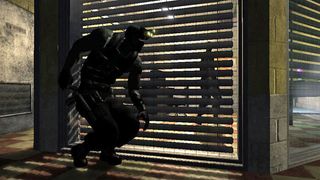

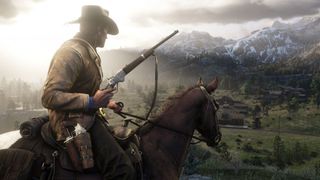
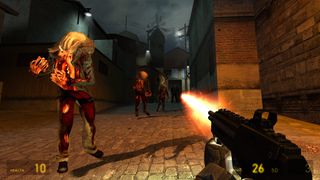
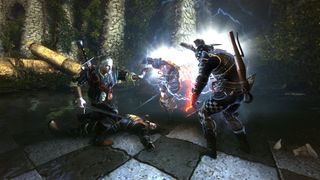
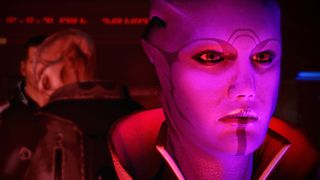
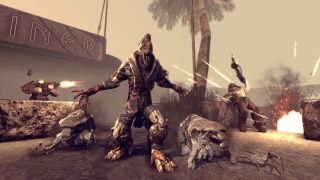
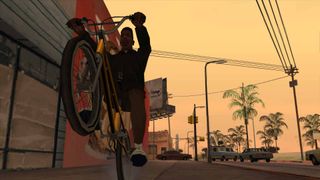
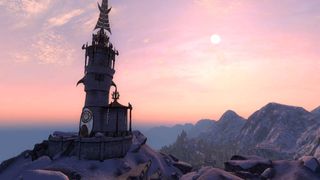
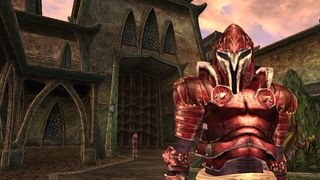



Comments
Post a Comment